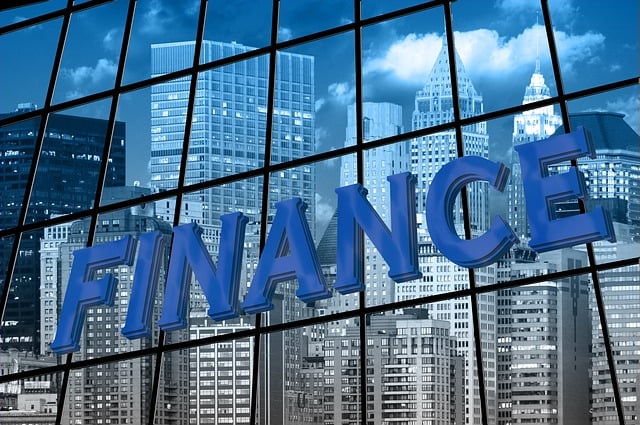Read time : 4 mins
Level : Advanced

Amaka Chukwuma | Wealth of Geeks undefined
In August, ratings agency Moody’s announced six major United States banks, including Bank of New York Mellon, State Street, and Northern Trust, were at risk of having their credit rating downgraded. An additional 10 mid-sized banks had their credit ratings slashed, exposing the “ongoing strain” within the U.S. banking sector.
This development sent shockwaves through the financial markets, with investors growing concerned about the potential challenges ahead for the banking sector.
The tension evident in Moody’s report is compounded by mounting pressures on funding and potential “weaknesses” in the capital reserves that lenders must maintain. A credit rating downgrade could further elevate the funding costs for these banks, intensifying their financial challenges.
Navigating The Interest Rate Hike
One fundamental issue contributing to this strain is the series of interest rate hikes implemented by the Federal Reserve, taking rates to their highest levels in 22 years in July before instituting the rate freeze we’re currently under.
However, rates soaring from near-zero to over 5.25%, significantly impacted U.S. banks, eroding the value of fixed-rate securities and loans held by banking institutions. Moody’s noted that interest rate risk is inadequately addressed in U.S. bank regulations, leading to potential liquidity risks.
Expanding on this perspective, Jorge Romero-Habeych, an Assistant Professor of Economics at the School of Business – Western New Mexico University, explains that the fundamental nature of the U.S. economy relies heavily on debt.
He stresses that the substantial economic growth witnessed in the aftermath of the Great Financial Crisis (GFC) was largely driven by the Federal Reserve’s maintenance of artificially low interest rates. This policy facilitated widespread borrowing by individuals, banks, and governments due to the affordability and accessibility of credit. Conversely, as interest rates rise, borrowing becomes more expensive and less accessible, prompting a notable shift in economic dynamics.
The challenges posed by the current environment of elevated interest rates affect various sectors of the economy. Additionally, Romero-Habeych points out a critical but often overlooked issue: the recent surge in bank failures over the past 12 to 18 months. This uptick in bank failures has surpassed the levels observed during the GFC, a matter that has received scant attention in mainstream media discussions.
Small Banks Face Bleak Prospects
The repercussions of increasing interest rates are not confined solely to major banks; they reverberate through various categories of financial institutions. As Jorge Romero-Habeych highlighted, smaller community banks are grappling with a complex dilemma. These banks are compelled to offer competitive interest rates to entice depositors while contending with a misalignment between their investment portfolios and the prevailing high-interest rate environment.
As Romero-Habeych elaborates, the composition of their investment portfolios has become a source of constraint. Their investment choices made sense in an era characterized by low interest rates and abundant liquidity. However, with the current surge in interest rates, these investments no longer align with their objectives. Consequently, the returns generated from these investments are insufficient to cover the costs incurred in retaining or attracting depositors.
Furthermore, the perceived safety net the Federal Reserve and the federal government provided has induced a significant exodus of depositors toward larger banks. Romero-Habeych asserts that these depositors believe that larger institutions are considerably more likely to receive bailouts from the Federal Reserve or the federal government in the event of insolvency, further compounding the challenges faced by small community banks.
Balancing The ‘Too Big to Fail’ Dilemma
While large banks enjoy the security of being deemed “too big to fail,” they are not immune to the challenges posed by the current economic landscape. These institutions have heavily invested in assets like bonds, which have seen their values erode due to the prevailing high-interest rate environment. This erosion has profoundly impacted large banks’ balance sheets, compelling many of them to divest these assets at discounted prices to maintain their day-to-day operations.
The prevailing risk-averse climate has induced caution among banks regarding lending practices. Jorge Romero-Habeych emphasizes that the return on investment must be substantial and relatively risk-free for banks to engage in lending activities. Consequently, many banks have opted to keep their deposits parked at the Federal Reserve, where they can earn the Fed Funds rate, currently hovering at approximately 5.25%, with minimal risk—comparatively speaking.
Given that the U.S. economy relies heavily on the cyclical process of borrowing and spending, a deceleration in lending activity carries significant implications. It can precipitate an economic slowdown, potentially manifesting as a recession or even a more severe economic downturn. Despite the allure of higher returns, the cautious approach adopted by banks underscores the delicate balance they must strike in the face of evolving economic conditions.
Seeking a Possible Solution
According to the professor, a more severe assessment of the U.S. banking system’s health is warranted. An economic correction may be necessary to restore the system’s robustness—a step that was not taken following the Great Financial Crisis (GFC). The prolonged period of low-interest rates and unchecked government spending in the decade after the GFC has contributed to the current predicament. Many observers refer to the current economic climate as the “everything bubble,” where excessive speculation has inflated asset prices across the board.
Romero-Habeych notes that a resilient and thriving economy hinges on a healthy banking system. The Federal Reserve’s easy money policies and unchecked government spending cannot persist if we aim to rejuvenate the economy. However, he acknowledges that lessons from history suggest that a voluntary change in behavior by either political party is unlikely. However, he insists that allowing an economic correction may be the only path forward, regardless of its severity.
In addressing the challenges facing the U.S. banking sector, it becomes evident that a thorough reevaluation of economic policies and a willingness to embrace corrective measures are essential to restoring stability and resilience to the financial system.
This article was produced and syndicated by Wealth of Geeks.
